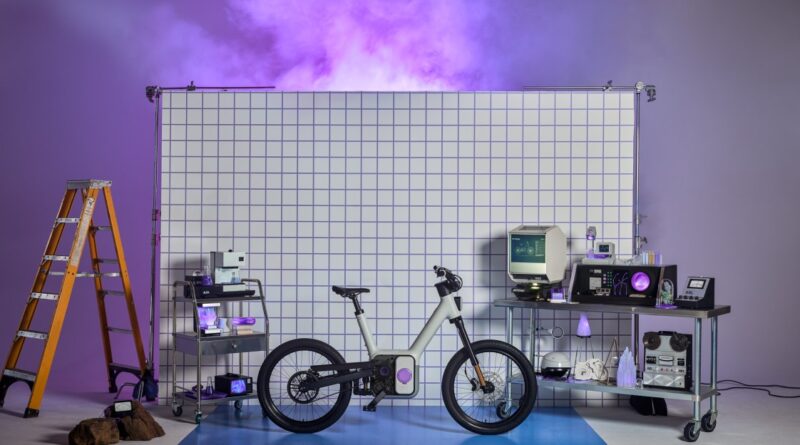Inside Rivian’s $4,500 electric bike gamble
Before RJ Scaringe founded the adventure-themed EV company Rivian, he was thinking about bikes.
Well, not bikes exactly. More like pedal-powered hybrid microcars and other forms of alternative transportation. This was three years before Scaringe launched Rivian, and nearly 13 years before the company eventually came out of stealth. By then, Scaringe had decided against building such a vehicle, concluding that the market would be too small, limited to a niche group of enthusiasts like himself.
Still, it would have been cool, right? A Rivian-designed minicar? “It would have been so cool,” Scaringe recalls in an interview with The Verge.
Although that specific idea was set aside, the motivation behind it — creating sustainable and adventurous forms of mobility of all sizes — remained. So about four years ago, Scaringe reached out to Specialized’s chief technology officer, Chris Yu, about starting up a skunkworks that could incubate various pedal-powered ideas.
A Rivian-designed minicar? “It would have been so cool,” Scaringe recalls
Today, the company that spun out of that effort, Also, unveiled its first batch of products: a modular e-bike, a pedal-powered four-wheeler, and an innovative bike helmet that is said to dramatically decrease the chance of head injury in a crash.
It’s a risky move for Rivian, which is currently bracing itself for a steep drop in EV sales following the recent expiration of the $7,500 federal EV tax credit in the US. The company is also gearing up for the production launch of its crucial R2 vehicle next year, which could help Rivian reverse its fortunes. But it has never had a profitable quarter, and there are serious concerns about the company’s ability to weather the next year or so as the EV market contracts. Is now really the right time for a new e-bike lineup?
Maybe so. Also — the company — is well capitalized, having recently raised $105 million from Eclipse Ventures. The startup poached workers from Apple, Google, Specialized, Tesla, REI Co-Op, and Uber. It’s vertically integrated like Rivian, which should give it some runway when it comes to costs. But Also is about much more than just e-bikes.
“We really look at this as a business that’s going to be pursuing a variety of form factors that are all sub-car,” Scaringe said. “We said, first principles, let’s truly rethink the bike in its entirety, and then think of that as a platform for other things.”




Okay, yes, images of the Rivian e-bike have already leaked — twice. But even so, I can confidently say that this bike is truly unique. I’ve been covering e-bikes for years now, and I’ve seen all manner of e-bike, from fat tires to foldables to motorbikes to one that looks like a suitcase. But I’ve never seen anything like this.
The flagship TM-B (TM stands for “transcendent mobility,” while B designates “bike”) evades easy categorization with its modular top frame that allows riders to swap between a regular saddle, a utility seat with a rack, and a bench seat for a more motorbike riding style. The seat post is electrically attached, which allows it to be removed without any tools by just unlocking it in the screen’s settings. Chris Yu, who has since left Specialized and now serves as president of Also, says the modular top frame can be swapped in just three seconds.
The mid-drive system, which Rivian calls “Dream Ride,” also looks like something out of a science fiction movie from the ’80s, with its smooth edges and translucent purple housing. Dream Ride is an innovative pedal-by-wire system, which means there’s no mechanical connection between the pedaling and the movement of the bike. Instead, the rider pedals a generator motor on the crank, which replenishes the battery; a separate traction motor at the rear wheel is software-driven via a Gates Carbon belt drive.
The drivetrain of a bicycle has stayed fairly conventional for years, with the chain (or more recently a belt) delivering power from the crankset to the rear wheel as the bike is pedaled. For the most part, that hasn’t changed in over 100 years, even with the advent of electric bikes. A pedal-by-wire system completely subverts that. The idea has been kicked around for years, with Rivian’s Also now fully embracing it.
According to Yu, Also wanted to sweep away all the old vestiges of a traditional drivetrain and replace it with something new that could appeal to both avid cyclists and novice riders. Out of the box, the bike is pretty simple to operate, with no gear shifting and an adaptive mode that continuously matches the preferred cadence — the only rider inputs are essentially “easy” or “hard.” Yu says that while most e-bikes offer up to “4x amplification,” Also’s bikes can support up to “10x,” including 180 Newton-meters of torque, which far exceeds even the torquiest of electric mountain bikes. That helps when hauling heavy loads or conquering steep hills, with good acceleration from a standstill to handle short car-like trips.
Also wanted to sweep away all the old vestiges of a traditional drivetrain
Dream Ride can also emulate a fixed-ratio bike for riders who want it. For example, a trail mode presents discrete gear ratios (10, 12, 20, or really any number) with perfectly timed changes and no misshifts, Yu says, so the bike feels like a traditional geared mountain bike. The software makes hill climbing easier by automatically detecting and compensating for grade. And over 90 percent of braking can be handled by regen for reduced pad wear and improved range, akin to modern EVs.
“So we have very, very high efficiency,” he says. “And it’s also — and this is the really tricky part that took us a long, long time — precisely gives you force feedback that duplicates exactly what a perfect bike would feel like in the moment that you’re at.”
The removable battery comes in two sizes: a 538 Watt-hour standard battery to power the bike for up to 60 miles, with a 0–80 percent charge time in two hours; and a 808Wh larger battery with up to 100 miles of range and 0–80 percent charge time in two and a half hours. The battery sports a pair of USB-C PD 3.1 Standard charge ports that put out 240W of bidirectional power. And there’s an E Ink state-of-charge display that shows battery level without consuming too much energy.
The TM-B features an in-house developed “zonal” architecture just like Rivian’s cars that enables “seamless experiences” like using your phone as a digital key to unlock the bike. When a paired phone approaches, the bike recognizes the user, greets them by name, and loads their saved settings. User profiles are also tied to the modular top frame, so when a specific top frame is attached the bike can reconfigure to the rider’s preferences automatically. The anti-theft system immobilizes the wheels automatically when the user with the paired phone walks away.
On the headset, a 5-inch circular touchscreen called the Portal displays all the information the rider needs, such as navigation, state of charge, and assist levels. Listening to music or a podcast? If you pair your phone to the bike, you can play, pause, change tracks, and control volume through a purple button and scroll wheel embedded on the left handlebar. (Please be safe when doing this!)
The TM-B is a Class 3 e-bike with a top speed of 28mph. A thumb throttle can enable speeds of up to 20mph where regulations allow. The bike also offers full suspension, with an inverted fork in the front, that should allow less experienced riders to “go through a huge pothole at 25mph” with little disruption, Yu says.
Of course, there’s “one more thing,” Yu said. Well, two, actually.
In addition to the TM-B, Also is also launching the TM-Q, a pedal-assisted four-wheeler that can be modified as a commercial vehicle or for personal use. The commercial version looks similar to the battery-powered cargo bikes, used by companies like UPS and DHL. These vehicles have been proliferating in cities — and clogging up bike lanes, to the consternation of some cyclists — for a few years now. But it would make sense that Rivian, which also makes electric delivery vans for Amazon and other companies, would be dipping its toes into this space.
The TM-Q also comes in a consumer format as an open-air golf cart of sorts. As more communities adapt to low-speed, so-called neighborhood electric vehicles, Yu says that Also can capture some of that market at a much lower price than what’s currently being sold. And by opting for a quad vehicle, Yu hopes to attract customers for whom riding a bakfiets-style cargo bike is perhaps too complicated.
And lastly, Also is revealing an innovative new bike helmet that it says can seriously reduce the risk of head injury in a crash. Dubbed the Alpha Wave Helmet, it uses Release Layer System technology to reduce the rotational energy transferred to the wearer in an impact. In doing so, it can potentially decrease the chance of traumatic brain injury by over 60 percent, Yu says, citing independent studies. The helmet also includes built-in lights, microphones, and speakers for safe hands-free calls or music.
It’s a robust product debut from a new company that hopes to send the signal that this is no vanity project by Rivian. But it will also come at a premium: The launch edition TM-B, which is available in spring 2026, will sell for $4,500. A base model will sell for under $4,000, with the exact price still to be determined. That version won’t be available until late 2026.
Does an already saturated e-bike market need another $4,000-plus premium model? It’s a fair question, and one that could limit the bike’s appeal when it eventually goes on sale. Other e-mobility companies like Cake and VanMoof have gone bankrupt trying to gin up demand for their fancy two-wheelers. (VanMoof is now owned by McLaren Applied and is back in business.) US customers are used to paying less than their highly regulated counterparts in Europe. Currently, the most popular models in the US are foldable, fat-tire e-bikes that retail for around $1,000.
When I ask Scaringe how he feels about the launch of Also, after all those years mulling over ideas and going back and forth on whether to pull the trigger, he says he’s clear-eyed about the future. The goal of the new venture, he says, is to transform micromobility from a fragmented field of small, underfunded projects into a robust and well-capitalized industry. With strong financial backing, Rivian hopes to achieve a “step change” by turning what has often been a side experiment for major car companies into a serious, large-scale business built around sub-car mobility solutions.
Scaringe likens the experience to — what else? — driving a Rivian. If the only EVs you’ve ever driven are “crudely made,” you’ll notice the difference right away, he says. “Just the completeness of the package and completeness of the experience is really attractive. And so we hope people will try [the TM-B] and be like, ‘I didn’t even know I wanted an e-bike and now I want to buy this e-bike.’”







